We put the Samsung Galaxy S24 Ultra through our rigorous DXOMARK Camera test suite to measure its performance in photo, video, and zoom quality from an end-user perspective. This article breaks down how the device fared in a variety of tests and several common use cases and is intended to highlight the most important results of our testing with an extract of the captured data.
Overview
Key camera specifications:
- Primary: 200MP sensor, 24mm equivalent f/1.7-aperture lens, AF, OIS
- Ultra-wide: 12MP sensor, 13mm equivalent f/2.2-aperture lens, AF
- Tele 1: 10MP sensor, 67mm equivalent f/2.4-aperture lens, OIS, AF
- Tele 2: 50MP sensor, 111mm equivalent f/3.4-aperture lens, OIS, AF
- Video: 8K at 24/30fps, 4K at 30/60/120fps, 1080p at 30/60/240/960fps, HDR10+
Scoring
Sub-scores and attributes included in the calculations of the global score.
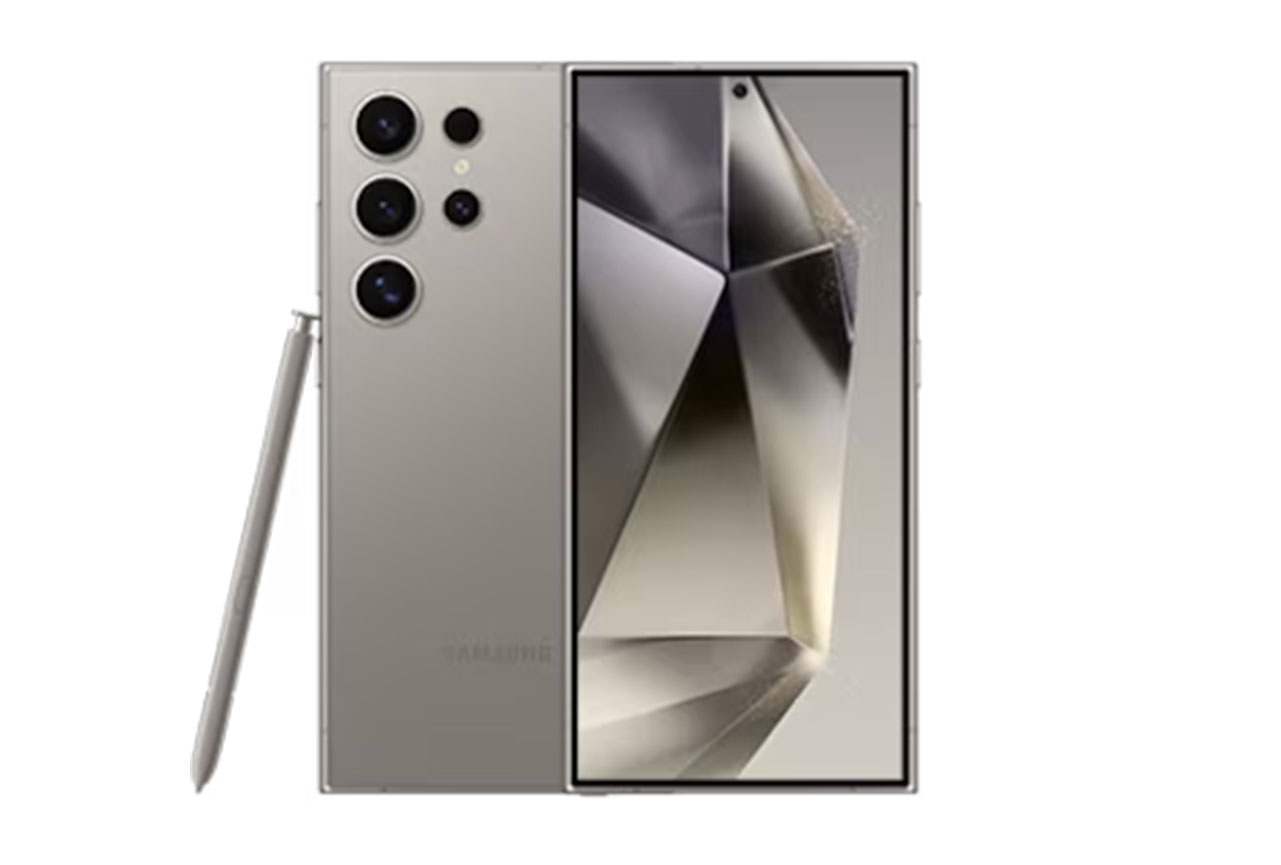
Samsung Galaxy S24 Ultra


Use cases & Conditions
Use case scores indicate the product performance in specific situations. They are not included in the overall score calculations.
Outdoor
Photos & videos shot in bright light conditions (≥1000 lux)
Indoor
Photos & videos shot in good lighting conditions (≥100lux)
Lowlight
Photos & videos shot in low lighting conditions (<100 lux)
Friends & Family
Portrait and group photo & videos
Pros
- Vivid and pleasant brightness across all conditions for photo and video when viewed on HDR display
- Accurate target exposure down to low light in photo
- Neutral white balance and precise color rendering in most test scenarios for photo, zoom and video
- Good detail in bright light
- Well-controlled noise in bright light for photo and video
- Effective video stabilization
Cons
- Noise, particularly in the shadow areas and corners of the frame in photo
- Noise in low-light video
- Shallow depth of field results in out-of-focus background subjects in group shots
- Noticeable delay between pressing the shutter and capturing under various test conditions
- Exposure and white balance instabilities in photo and video
- Video focus slow to react
- Loss of fine detail in low light
The Samsung Galaxy S24 Ultra delivered a decent performance in the DXOMARK Camera tests and was a slight overall improvement over its predecessor S23 Ultra, helped by a 200MP image sensor in the main camera, a range of new AI features, and the latest Snapdragon 8 Gen 3 chipset. Our testers particularly liked the Samsung’s portrait shots in bright light, which offered vivid and natural color that in some shots felt even more realistic than on the Apple iPhone 15 Pro Max. It’s difficult to tell to which degree the AI exactly contributes to image quality, but it certainly appears that the new AI tools and Samsung’s existing imaging technologies have helped to greatly improve the rendering of some images.
The S24 Ultra ultra-wide camera did very well in bright light, and at the other end of the zoom spectrum, the addition of two tele modules contributed to good detail and overall image quality across a wide range of tele zoom scenes. The new model has to make do without its predecessor’s 10x tele camera, but this did not appear to have had any major impact on tele zoom quality, with the S24 Ultra still producing fairly good detail at long range.
Video is arguably the area that benefits least from the S24 Ultra’s software and hardware improvements. Our testers noticed more pleasant and natural colors than on the S23 Ultra, but video clips were also significantly impacted by exposure and color instabilities. Thanks to better noise reduction and improved color, the S24 Ultra’s video could still keep up with its predecessor, but video results lagged overall significantly behind the class-leading Apple iPhone 15 Pro Max, which outperformed the Samsung across pretty much all video test categories.
Although the Samsung Galaxy S24 Ultra camera didn’t set any records, the latest flagship from Samsung is a very capable all-round device that provides a more than satisfactory performance for all types of photography in various kinds of scenarios.
With its pleasant colors and nice contrast in most shooting conditions, the Samsung Galaxy S24 Ultra is a good option for portrait photography. However, a slight delay between pressing the shutter and actual capture of the image means it’s not your best bet for photographing moving subjects. There is a risk of missing the decisive moment. While the camera’s shallow depth-of-field could result in some out-of-focus faces in group shots, it can also add a nicely blurred background to the pleasant skin tones and good exposure of close-up portrait shots.
The Samsung Galaxy S24 Ultra performed fairly well in dim lighting conditions, with usually pleasant exposure, nice colors and fairly good detail. However, in our tests the latest Samsung’s flagship still struggled with noise reduction, exposing noise in the shadow areas and corners of the frame. In video mode, our testers noticed a significant loss of detail when recording in low light.
Test summary
About DXOMARK Camera tests: DXOMARK’s Camera evaluations take place in laboratories and in real-world situations using a wide variety of subjects. The scores rely on objective tests for which the results are calculated directly by measurement software on our laboratory setups, and on perceptual tests in which a sophisticated set of metrics allow a panel of image experts to compare aspects of image quality that require human judgment. Testing a smartphone involves a team of engineers and technicians for about a week. Photo, Zoom, and Video quality are scored separately and then combined into an Overall score for comparison among the cameras in different devices. For more information about the DXOMARK Camera protocol, click here. More details on smartphone camera scores are available here. The following section gathers key elements of DXOMARK’s exhaustive tests and analyses. Full performance evaluations are available upon request. Please contact us on how to receive a full report.
Photo
Samsung Galaxy S24 Ultra
169
For scoring and analysis, DXOMARK engineers capture and evaluate more than 2,600 test images both in controlled lab environments and in outdoor, indoor and low-light natural scenes, using the camera’s default settings. The photo protocol is designed to take into account the main use cases and is based on typical shooting scenarios, such as portraits, family, and landscape photography. The evaluation is performed by visually inspecting images against a reference of natural scenes, and by running objective measurements on images of charts captured in the lab under different lighting conditions from 1 to 1,000+ lux and color temperatures from 2,300K to 6,500K.
While the hardware in the S24 Ultra main camera module has remained very similar to the predecessor S23 Ultra, image output has been significantly improved, in large part due to the introduction of a new Ultra HDR format. The S24 Ultra sample images in this article come with an embedded gain map that applies the HDR rendering when the image is viewed on a compatible display. When viewed on such a display, the Samsung’s HDR images offered vivid and pleasant brightness, with accurate target exposure down to low light. In addition, white balance was neutral, with accurate color rendering in most conditions. In bright light, the S24 Ultra still images showed good detail and image noise was well under control. However, when shooting in dimmer conditions, a loss of fine detail became noticeable and noise started creeping in.
Please note: The Samsung Galaxy S24 Ultra images were evaluated using the device’s HDR format, which is not applied to the thumbnails on this page. Please click on the thumbnail to open the original files with embedded gain map. The Apple iPhone images on this page embed the gain map in the HEIC format, which unfortunately cannot be displayed on a web page.

Exposure
Samsung Galaxy S24 Ultra
130
Exposure is one of the key attributes for technically good pictures. The main attribute evaluated is the brightness of the main subject through various use cases such as landscape, portrait, or still life. Other factors evaluated are the contrast and the dynamic range, eg. the ability to render visible details in both bright and dark areas of the image. Repeatability is also important because it demonstrates the camera's ability to provide the same rendering when shooting several images of the same scene.
The S24 Ultra did very well in the exposure category, thanks to the combination of the new HDR format and Samsung’s rendering. Compared to the previous S-series generation, our testers could observe significant improvements in several areas. The HDR format allowed for much more natural contrast between highlights and the subjects when viewed on an HDR display. Thanks to Samsung’s image tuning, the S24 Ultra’s exposure performance was on a very similar level to the iPhone 15 Pro Max we had tested previously. Still, some challenging conditions showed some slight face exposure issues on the device, and the device lagged behind some competitors like the iPhone 15 Pro Max because of slight tone-mapping instabilities when shooting a series of images.

Color
Samsung Galaxy S24 Ultra
130
Color is one of the key attributes for technically good pictures. The image quality attributes analyzed are skin-tone rendering, white balance, color shading, and repeatability. For color and skin tone rendering, we penalize unnatural colors but we respect a manufacturer's choice of color signature.
In terms of color, improvements over the S23 Ultra were again noticeable, especially when shooting in daylight conditions where white balance and color accuracy were excellent. The Samsung also delivered pleasant skin tones in several conditions, with a softer rendering than the predecessor, where skin tones could often be oversaturated. On the downside, our testers noticed some warm yellow casts and color inaccuracies in indoor and low light.

Autofocus
Samsung Galaxy S24 Ultra
125
Autofocus tests concentrate on focus accuracy, focus repeatability, shooting time delay, and depth of field. Shooting delay is the difference between the time the user presses the capture button and the time the image is actually taken. It includes focusing speed and the capability of the device to capture images at the right time, what is called 'zero shutter lag' capability. Even if a shallow depth of field can be pleasant for a single subject portrait or close-up shot, it can also be a problem in some specific conditions such as group portraits; Both situations are tested. Focus accuracy is also evaluated in all the real-life images taken, from infinity to close-up objects and in low light to outdoor conditions.
During the autofocus tests, our experts observed a noticeable delay between pressing the shutter and the image being captured in a range of shooting conditions, especially in high-contrast scenes. In some group shots, we also noticed that the camera focused on a face in the background, instead of the face closest to the camera.

Texture
Samsung Galaxy S24 Ultra
125
Texture tests analyze the level of details and the texture of subjects in the images taken in the lab as well as in real-life scenarios. For natural shots, particular attention is paid to the level of details in the bright and dark areas of the image. Objective measurements are performed on chart images taken in various lighting conditions from 1 to 1000 lux and different kinds of dynamic range conditions. The charts used are the proprietary DXOMARK chart (DMC) and the Dead Leaves chart.
The level of captured detail in backlit scenes was significantly better on the S24 Ultra than on the predecessor S23 Ultra. Backlighting is particularly challenging in terms of detail rendering, and our testers found the Samsung to be up there with the very best in such difficult conditions. This said, in scenes with lower contrast, detail tended to be significantly lower than on the best-in-class devices, especially when shooting outdoors.

Noise
Samsung Galaxy S24 Ultra
117
Noise tests analyze various attributes of noise such as intensity, chromaticity, grain, structure on real-life images as well as images of charts taken in the lab. For natural images, particular attention is paid to the noise on faces, landscapes, but also on dark areas and high dynamic range conditions. Noise on moving objects is also evaluated on natural images. Objective measurements are performed on images of charts taken in various conditions from 1 to 1000 lux and different kinds of dynamic range conditions. The chart used is the Dead Leaves chart and the standardized measurement such as Visual Noise derived from ISO 15739.
In bright light, image noise was pretty well under control, but it became quite intrusive under typical indoor lighting where the S24 Ultra lags behind competitors such as the iPhone 15 Pro Max and sometimes even its own predecessor, the S23 Ultra. In low-light conditions, the S24 Ultra was closer to the level of the competition, especially when shooting handheld.

Artifacts
Samsung Galaxy S24 Ultra
82
The artifacts evaluation looks at lens shading, chromatic aberrations, geometrical distortion, edges ringing, halos, ghosting, quantization, unexpected color hue shifts, among others type of possible unnatural effects on photos. The more severe and the more frequent the artifact, the higher the point deduction on the score. The main artifacts observed and corresponding point loss are listed below.
Overall, image artifacts were fairly well under control on the Samsung Galaxy S24 Ultra, but our testers noticed some hue shifts near saturated areas and color quantization, both artifacts that are more challenging to manage with the new HDR format. Unlike on some competitors, the introduction of AI imaging tools resulted in image rendering that was quite natural. Compared to its predecessor, the Galaxy S24 Ultra device showed fewer fusion artifacts and overall image rendering was realistic.
Bokeh
Samsung Galaxy S24 Ultra
85
Bokeh is tested in one dedicated mode, usually portrait or aperture mode, and analyzed by visually inspecting all the images captured in the lab and in natural conditions. The goal is to reproduce portrait photography comparable to one taken with a DLSR and a wide aperture. The main image quality attributes paid attention to are depth estimation, artifacts, blur gradient, and the shape of the bokeh blur spotlights. Portrait image quality attributes (exposure, color, texture) are also taken into account.
In a similar way to the S23 Ultra, the S24 Ultra uses one of its tele camera modules (67mm equivalent focal length) when shooting in bokeh mode. Thanks to the compression of perspective, this longer focal length is much more suitable for portrait shots than the wide angles used by some competitors.
Rendering of the Samsung’s bokeh shots was fairly natural and pleasant, with subjects well isolated from the background. However, despite a generally very accurate depth estimation in real-life shots, some errors were noticeable in our lab scene. Our testers also noticed some white balance and depth estimation instabilities across consecutive shots of the same scene. But overall, the camera delivered stable results in bokeh mode.
Preview
Samsung Galaxy S24 Ultra
93
Preview tests analyze the image quality of the camera app's preview of the image, with particular attention paid to the difference between the capture and the preview, especially regarding dynamic range and the application of the bokeh effect. Also evaluated is the smoothness of the exposure, color and focus adaptation when zooming from the minimal to the maximal zoom factor available. The preview frame rate is measured using the LED Universal Timer.
On the Galaxy S24 Ultra, the preview image on the device display was generally close to the captured image. In some difficult backlit scenes, dynamic range was lower in the preview than in the final image, but things were much improved over the S23 Ultra in this respect. In addition, our testers found the preview image to be pretty smooth and stable while zooming in or out.
Zoom
Samsung Galaxy S24 Ultra
169
DXOMARK engineers capture and evaluate over 400 test images in controlled lab environments and in outdoor, indoor, and low-light natural scenes, using the camera’s default settings and pinch zoom at various zoom factors from ultra wide to very long-range zoom. The evaluation is performed by visually inspecting the images against a reference of natural scenes, and by running objective measurements of chart mages captured in the lab under different conditions from 20 to 1000 lux and color temperatures from 2300K to 6500K.
The Samsung S24 Ultra is one of the better devices that we have tested in the zoom category. In our tests, the long tele lens allowed for excellent results at long tele range settings, and the secondary tele helped achieve very high levels of detail across the entire tele zoom range. This new zoom configuration will be compared to its predecessor, which was equipped with one 230mm-equivalent focal length tele module. The performance of the ultra-wide camera was remarkable when shooting in daylight, and while at 14mm equivalent, the field of view was not quite as wide as on some direct competitors, it still allowed you to capture a large portion of the scenery.
Video Zoom
The Samsung Galaxy S24 Ultra did very well in video zoom and was on par with the iPhone 15 Pro Max. Pinch zooming was stable and quite smooth, without any jerkiness in the video. Exposure was quite stable as well. On the downside, white balance transitions were quite noticeable when switching from one camera module to another. Given that the Samsung comes with a total of four modules, this is more problematic than on a device with fewer camera modules, but the overall experience was still pleasant.

Wide
Samsung Galaxy S24 Ultra
122
These tests analyze the performance of the ultra-wide camera at several focal lengths from 12 mm to 20 mm. All image quality attributes are evaluated, with particular attention paid to such artifacts as chromatic aberrations, lens softness, and distortion. Pictures below are an extract of tested scenes.
The S24 Ultra ultra-wide camera module comes with a 35mm-equivalent focal length of 14mm, which allows you to squeeze a lot of the scene into the image, but it is not as wide as some competitors. Ultra-wide images showed quite good color, texture as well as low noise levels when shooting in bright light. However, noise was quite noticeable in the shadow areas of the frame and when shooting under indoor lighting or in low light.

Tele
Samsung Galaxy S24 Ultra
128
All image quality attributes are evaluated at focal lengths from approximately 40 mm to 300 mm, with particular attention paid to texture and detail. The score is derived from a number of objective measurements in the lab and perceptual analysis of real-life images.
In our zoom tests, exposure and color were excellent across all zoom settings. Target exposure was always accurate, with a fairly wide dynamic range. White balance and color rendering were usually accurate as well, even when shooting in high-contrast conditions and in difficult backlit scenes. Image quality remained very good at long-range tele, thanks to the dedicated long tele module. Images had high levels of detail, accurate exposure, and a wider dynamic range than on the S23 Ultra. In addition, color rendering and white balance were accurate.
Close range tele has also been improved over the preceding model, but our testers noticed unnatural detail rendering on some occasions. The camera had a tendency to apply strong noise reduction on landscape shots at the expense of texture. Portrait shots on the other hand were fairly noisy.
Video
Samsung Galaxy S24 Ultra
159
DXOMARK engineers capture and evaluate more than 2.5 hours of video in controlled lab environments and in natural low-light, indoor and outdoor scenes, using the camera’s default settings. The evaluation consists of visually inspecting natural videos taken in various conditions and running objective measurements on videos of charts recorded in the lab under different conditions from 1 to 1000+ lux and color temperatures from 2,300K to 6,500K.
The Samsung Galaxy S24 Ultra’s video mode offers a wide array of frame rates and formats, including a 960fps slow-motion mode at 1080p, providing great creative flexibility to mobile video makers. In addition, the device is capable of recording 10-bit HDR footage videos (HDR10+ mode), allowing for HDR rendering with compatible displays and apps. With this technology now fairly commonplace on flagship models, the Samsung Galaxy S24 Ultra video mode was tested at 4K resolution with a frame rate of 60fps (auto-fps) and in HDR10+ format.
In our tests, contrast and the quality of the colors were improved by the HDR rendering, but the S24 Ultra would have benefited from a more stable auto-exposure and auto-white balance processing, with instabilities having a significant impact on video rendering in most conditions. These instabilities meant that the S24 Ultra video struggled to keep up with the Apple iPhone 15 Pro Max (tested in HDR mode) and sometimes even the Galaxy S23 Ultra (tested in SDR). In addition, the video focus was sometimes slow to react to changes in the scene.
Still, the Samsung Galaxy S24 Ultra was able to match the quality level of its predecessor thanks to its good noise reduction, effective video stabilization, and noticeable improvements in terms of color rendering and white balance, and it could outperform the S23 Ultra if the instabilities mentioned earlier are mitigated via a firmware update.

Exposure
Samsung Galaxy S24 Ultra
116
Exposure tests evaluate the brightness of the main subject and the dynamic range, eg. the ability to render visible details in both bright and dark areas of the image. Stability and temporal adaption of the exposure are also analyzed.
HDR10+ video format means that the footage is supposed to take advantage of the capabilities of HDR displays. It includes a wider range of luminance, and a wider color gamut than SDR displays, significantly improving the user experience. Target exposure in video was accurate most of the time, but subjects could be underexposed in some high-contrast indoor scenes. Our testers also found contrast to be slightly too strong in some scenes. This resulted in stronger shadow clipping than we had observed on the Galaxy S23 Ultra. Exposure adaptation issues and instabilities were also much more visible on the S24 Ultra than on its S23 Ultra or the iPhone 15 Pro Max.

Color
Samsung Galaxy S24 Ultra
120
Image-quality color analysis looks at color rendering, skin-tone rendering, white balance, color shading, stability of the white balance and its adaption when light is changing.
Like exposure, color benefited from the addition of HDR recording, with more accurate color rendering, as well as a more pleasant and neutral white balance, when compared to the Samsung Galaxy S23 Ultra. However, some skin tone types could be rendered unnaturally under indoor conditions and in low light. In addition, strong white balance instabilities were observed in low light.

Autofocus
Samsung Galaxy S24 Ultra
120
In our tests, the Samsung Galaxy S24 Ultra’s video focus was slow to react to changes in the scenes, and our testers observed focus-tracking issues when recording in bright light at 60fps. Still, the S24 Ultra was more accurate than the S23 Ultra, which appeared to struggle to focus on the right subject in low light on some occasions. In comparison, the iPhone 15 Pro Max delivered very accurate focus across all conditions, as well as very smooth and fast focus transitions.

Texture
Samsung Galaxy S24 Ultra
118
Texture tests analyze the level of details and texture of the real-life videos as well as the videos of charts recorded in the lab. Natural videos recordings are visually evaluated, with particular attention paid to the level of details in the bright and areas as well as in the dark. Objective measurements are performed of images of charts taken in various conditions from 1 to 1000 lux. The charts used are the DXOMARK chart (DMC) and Dead Leaves chart.
The Samsung Galaxy S24 Ultra delivered nice and natural video detail in bright light conditions, with slightly less sharpening than the S23 Ultra. When moving on to dimmer scenes, a lack of detail became often noticeable. Only some edges remained sharp while faces lost a lot of their skin texture and main features. Overall detail performance was close to the S23 Ultra but could not quite match the iPhone 15 Pro Max in most conditions.

Noise
Samsung Galaxy S24 Ultra
120
Noise tests analyze various attributes of noise such as intensity, chromaticity, grain, structure, temporal aspects on real-life video recording as well as videos of charts taken in the lab. Natural videos are visually evaluated, with particular attention paid to the noise in the dark areas and high dynamic range conditions. Objective measurements are performed on the videos of charts recorded in various conditions from 1 to 1000 lux. The chart used is the DXOMARK visual noise chart.
Like its direct competitor, the iPhone 15 Pro Max, the Galaxy S24 Ultra usually controlled image noise well in our tests and delivered video footage that was almost free of noise when recording in bright light. In low-light scenes, the Samsung could not quite keep up with the Apple, with some fine noise visible on textured areas, as well as chroma noise on areas of plain color. Still, the S24 Ultra results were an improvement over the S23 Ultra in most conditions.

Stabilization
Samsung Galaxy S24 Ultra
119
Stabilization evaluation tests the ability of the device to stabilize footage thanks to software or hardware technologies such as OIS, EIS, or any others means. The evaluation looks at residual motion, smoothness, jello artifacts and residual motion blur on walk and run use cases in various lighting conditions. The video below is an extract from one of the tested scenes.
In our tests, the Samsung Galaxy S24 Ultra’s video stabilization was very effective, with very little camera shake when walking or even running while recording. However, frame shifts were slightly more noticeable than on the iPhone. The same is true for residual vibrations in challenging conditions.

Artifacts
Samsung Galaxy S24 Ultra
86
Artifacts are evaluated with MTF and ringing measurements on the SFR chart in the lab as well as frame-rate measurements using the LED Universal Timer. Natural videos are visually evaluated by paying particular attention to artifacts such as aliasing, quantization, blocking, and hue shift, among others. The more severe and the more frequent the artifact, the higher the point deduction from the score. The main artifacts and corresponding point loss are listed below.
Video artifacts were overall well-controlled by the latest Galaxy S-series device, with few to no artifacts impacting the user experience. This said, the camera’s high contrast and saturated colors could on occasion result in noticeable hue shifts around bright elements of the frame, as well as on faces. When recording in low light, some ghosting was visible on moving subjects. This was pretty much the same on previous S-series models but is controlled better on the iPhone 15 Pro Max.
The Samsung Galaxy S24 Ultra is able to offer an adaptive frame rate that uses 60fps in bright light and indoors, which is on par with the iPhone 15 Pro Max. In our tests, this resulted in very smooth perceived motion. In low light, the frame rate drops to 30fps to allow for overall good quality in dimmer light conditions.


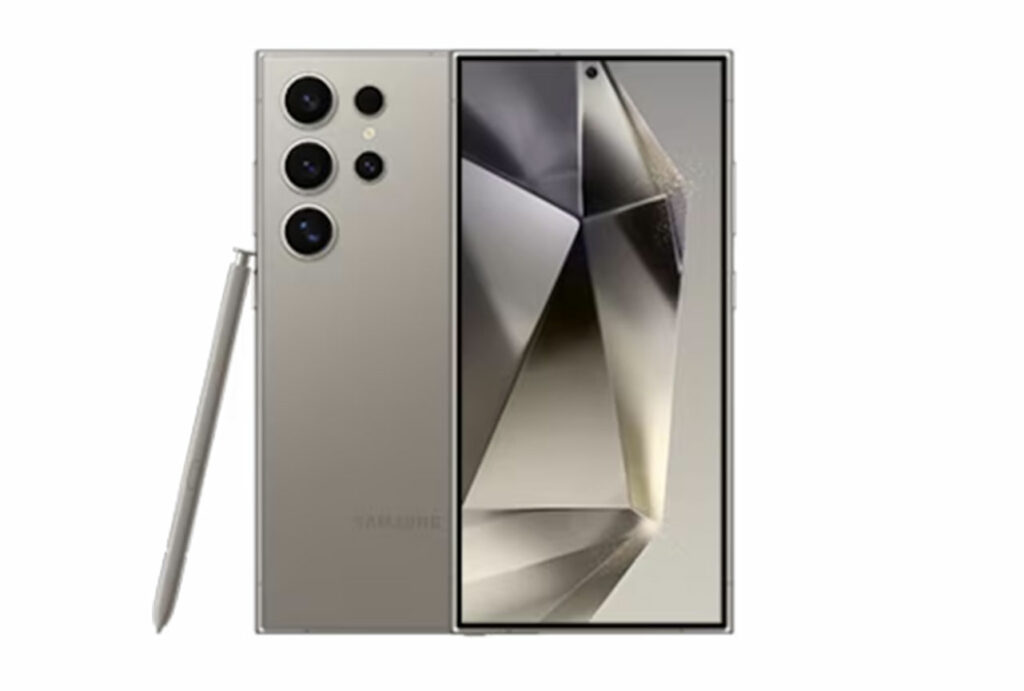

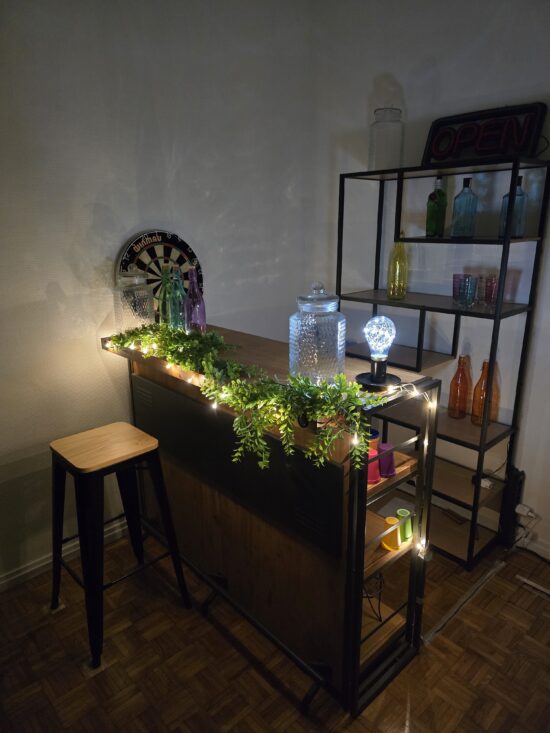



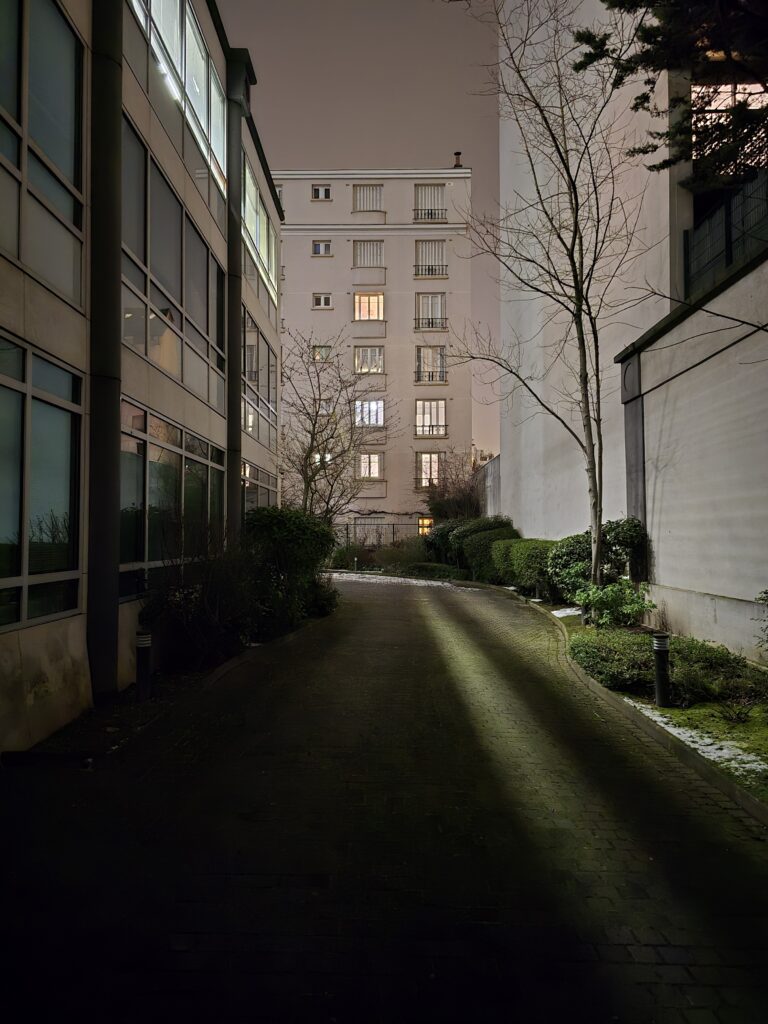
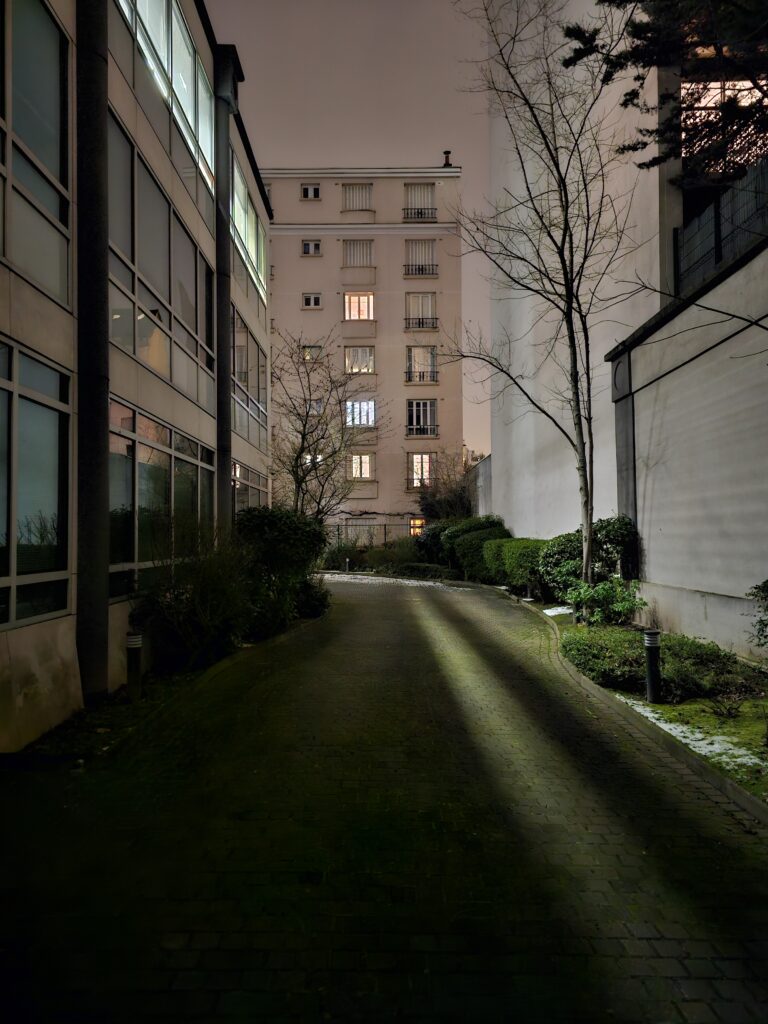



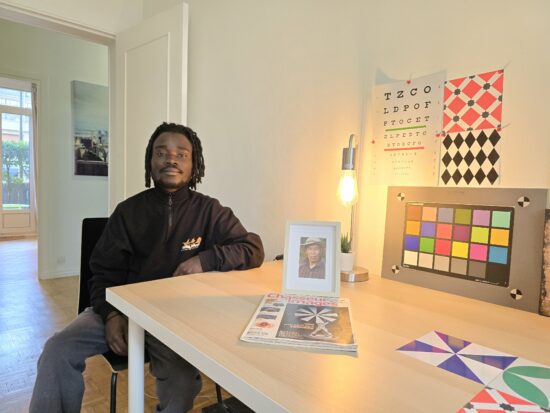
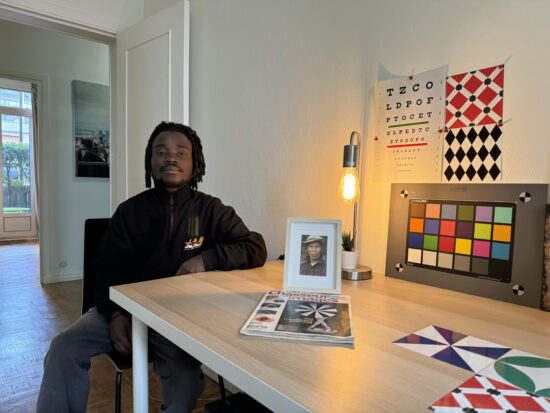
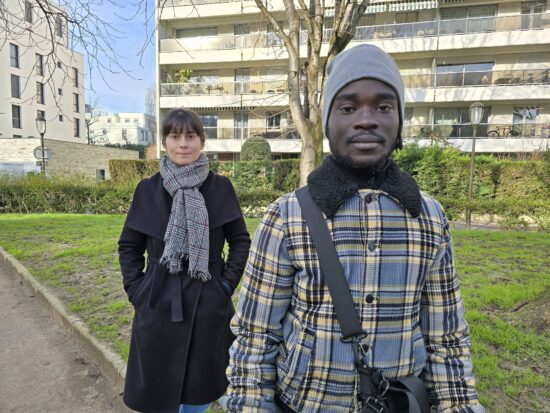
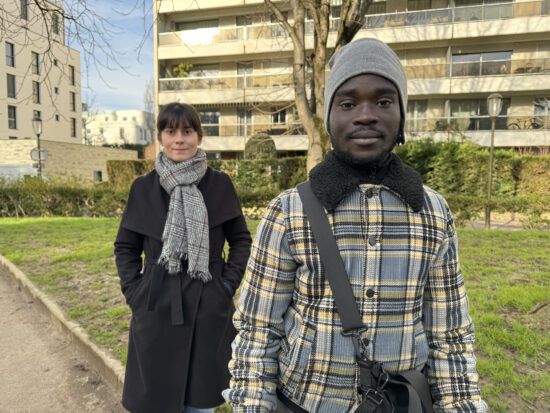
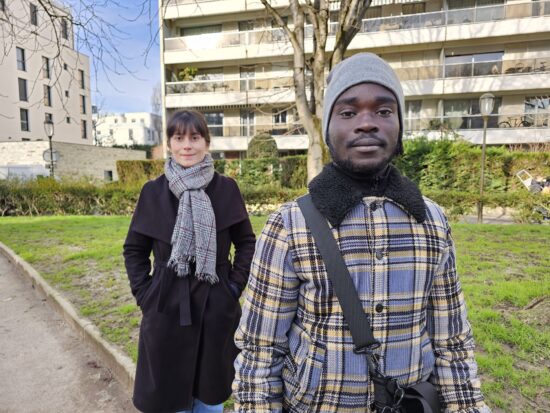


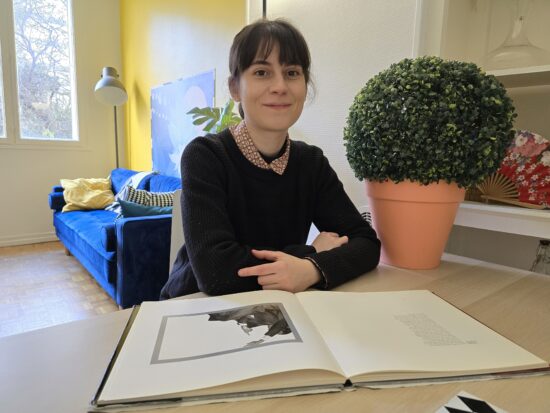
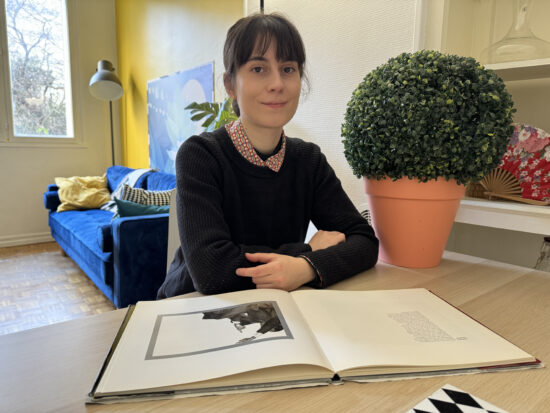
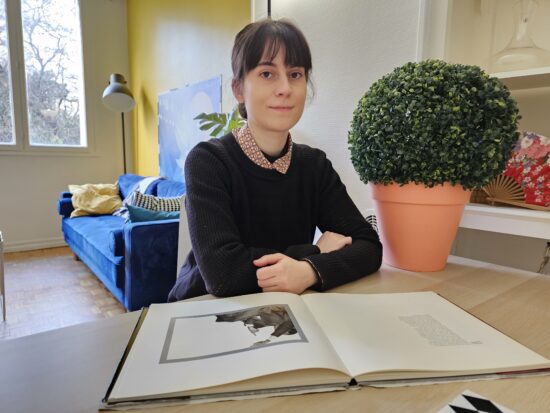




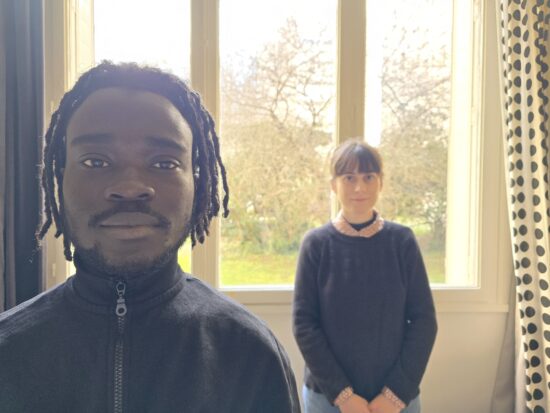
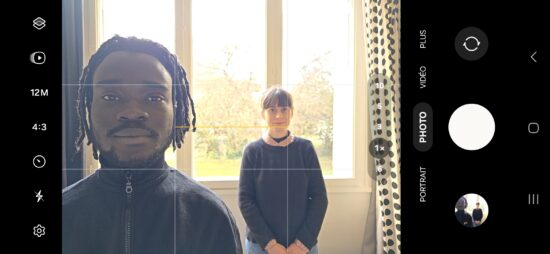

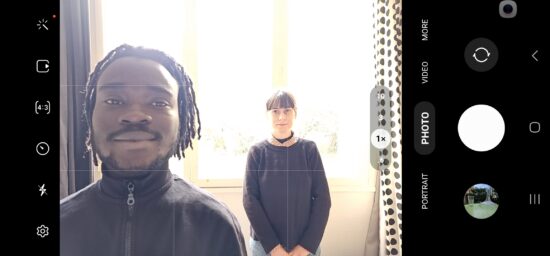
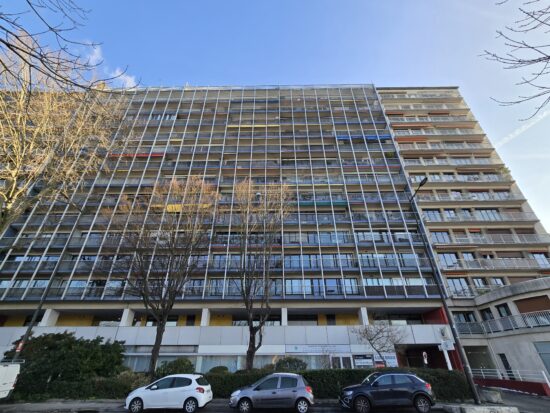
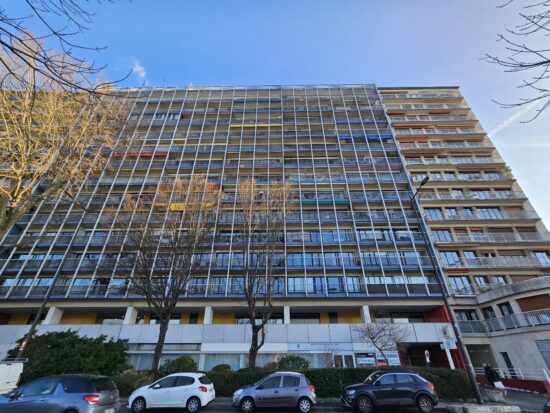
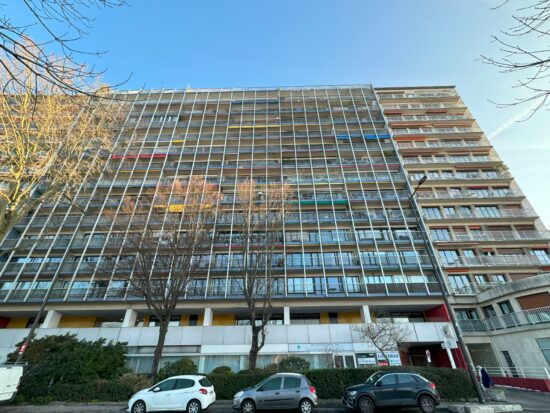



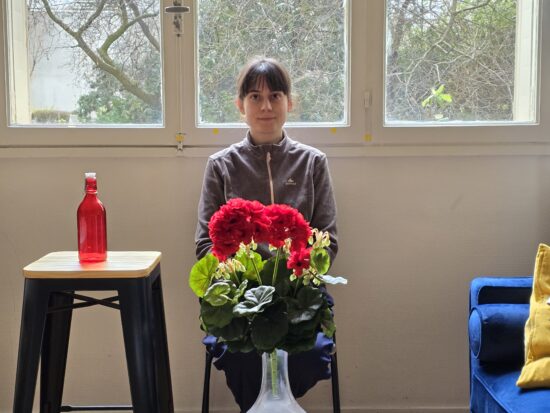
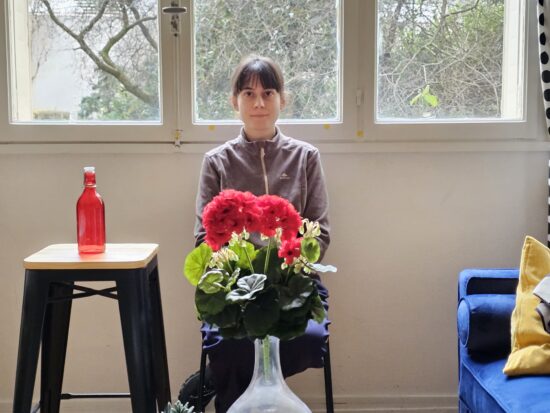
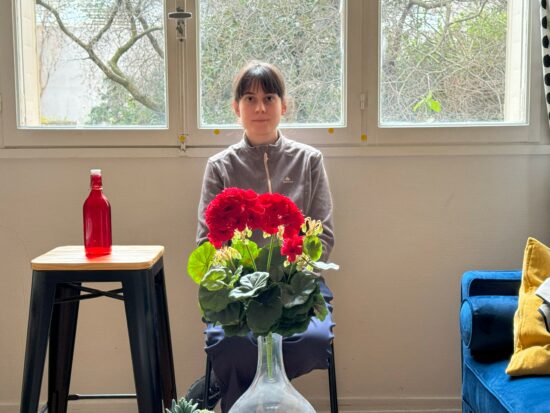



DXOMARK encourages its readers to share comments on the articles. To read or post comments, Disqus cookies are required. Change your Cookies Preferences and read more about our Comment Policy.